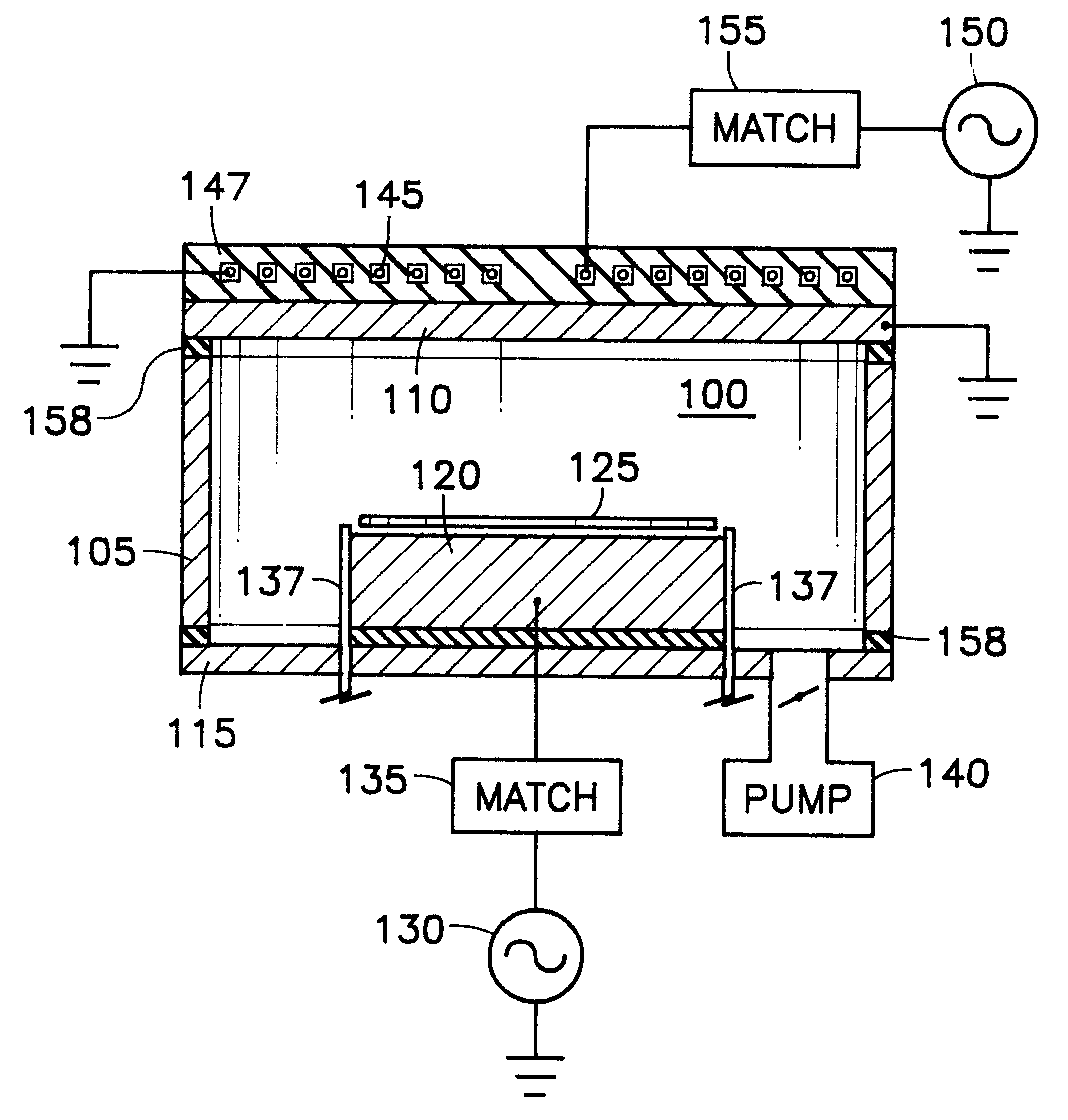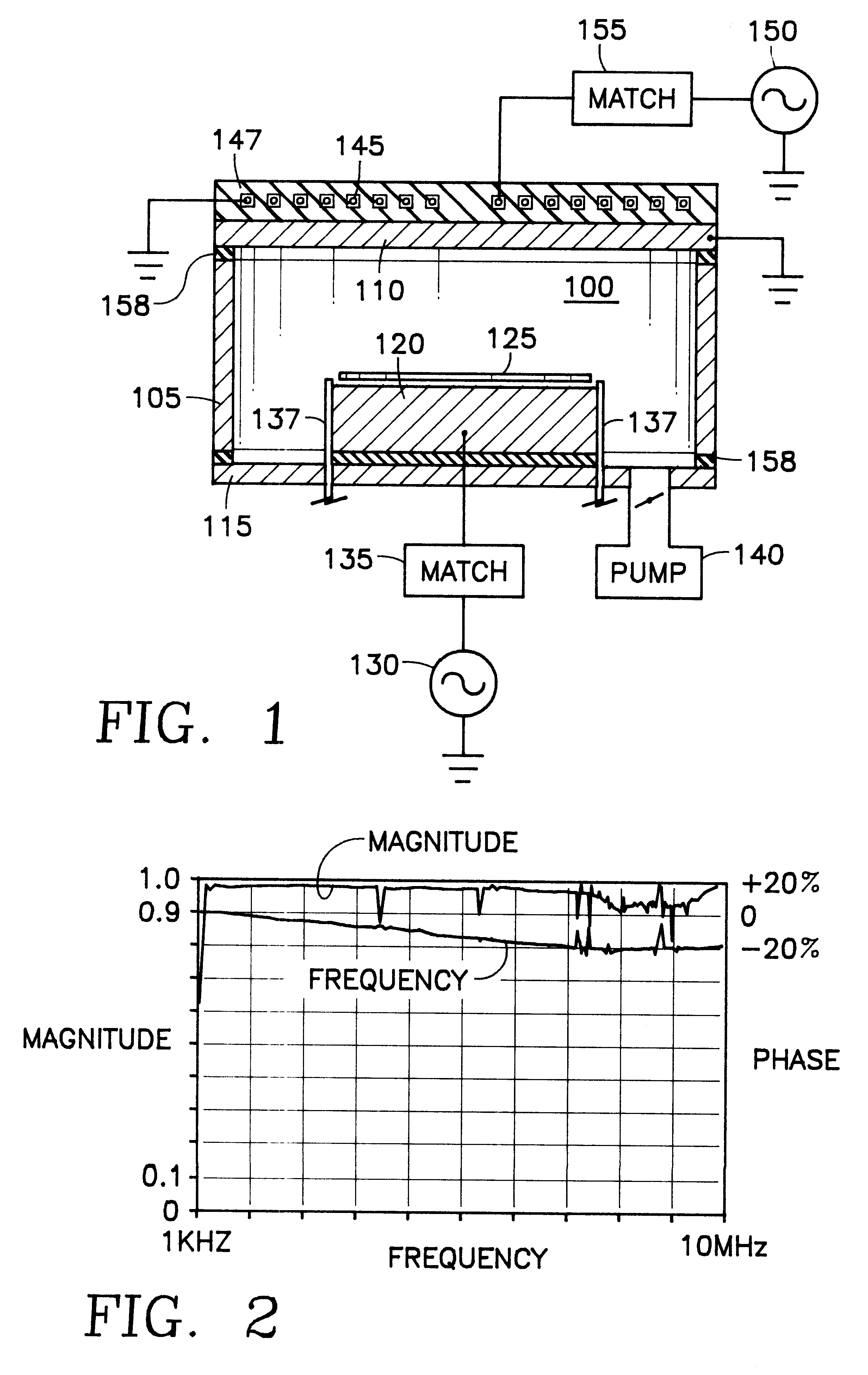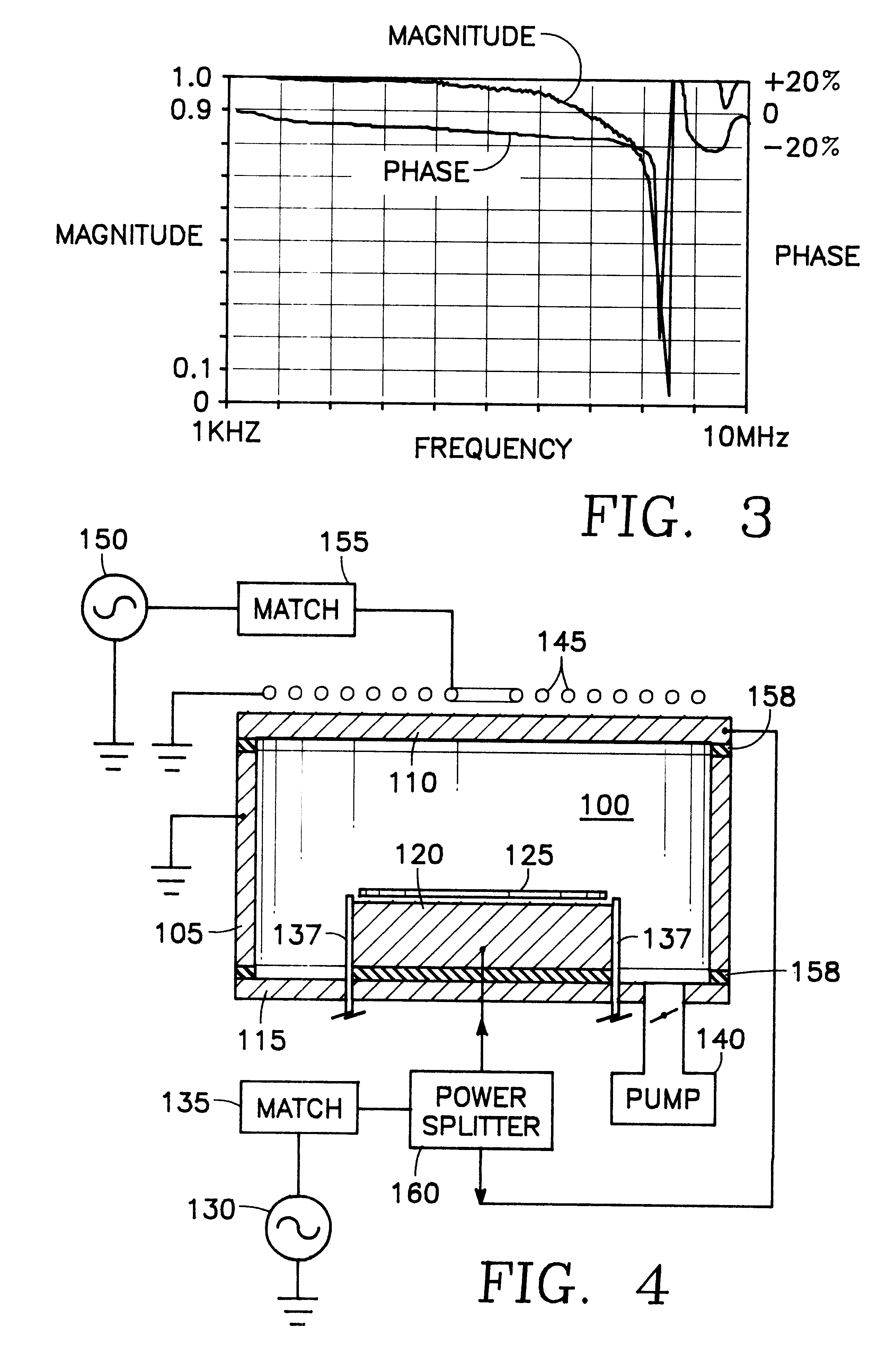Parallel-plate electrode reactor having an inductive antenna coupling power through a parallel plate electrode
a parallel plate electrode and reactor technology, applied in the field of plasma reactors, can solve the problems of inferior etch selectivity and etch profile, inability to provide independent control of ion density and ion energy, and material such as aluminum oxide tend to produce greater contamination
- Summary
- Abstract
- Description
- Claims
- Application Information
AI Technical Summary
Benefits of technology
Problems solved by technology
Method used
Image
Examples
Embodiment Construction
While the silicon ceiling 110 is grounded in the preferred embodiment of FIG. 1, in the embodiment FIG. 4 power from the RF generator 130 is split by a power splitter 160 between the pedestal 120 and the silicon ceiling 110. In order to provide a ground return path, the side wall 105 may be a grounded conductor. In FIG. 5, the silicon ceiling 110 is driven independently from the wafer pedestal 120 by a separate RF power generator 165 through a conventional impedance match circuit 170. While the embodiment of FIG. 1 employs a single coil as the inductor antenna 145, in the embodiment of FIG. 6 the inductor antenna 145 is comprised of plural (in this case, two) independently driven coils, namely an inner coil 175 overlying the wafer center and an outer coil 180 overlying the wafer periphery. In the implementation of FIG. 6, the inner and outer coils 175, 180 are planar concentric coils driven by separate plasma source power generators 185, 190. The advantage is that plasma variations ...
PUM
| Property | Measurement | Unit |
|---|---|---|
| pressure | aaaaa | aaaaa |
| depth | aaaaa | aaaaa |
| sizes | aaaaa | aaaaa |
Abstract
Description
Claims
Application Information
 Login to View More
Login to View More - R&D
- Intellectual Property
- Life Sciences
- Materials
- Tech Scout
- Unparalleled Data Quality
- Higher Quality Content
- 60% Fewer Hallucinations
Browse by: Latest US Patents, China's latest patents, Technical Efficacy Thesaurus, Application Domain, Technology Topic, Popular Technical Reports.
© 2025 PatSnap. All rights reserved.Legal|Privacy policy|Modern Slavery Act Transparency Statement|Sitemap|About US| Contact US: help@patsnap.com



